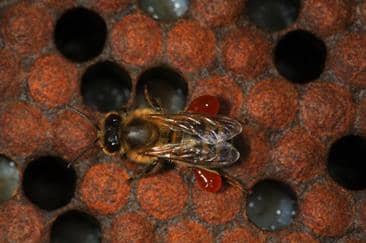
In addition to nectar and pollen, bees are collected from plants (mainly from the kidneys), and resinous substances, which are necessary for the bees produced by bees (bee glue).
The main constituent of propolis is the so-called balsamic substances found in the shell of pollen. It is believed that during the use of pollen bees, these substances are released, spewed through the mouth outward and mixed with resinous substances, after which they are either immediately used by bees, or are pasted on the frame in the form of lumps (stock)
Propolis is used by bees for gluing ceiling canvases, polishing cells, coating metal objects, covering all cracks and unevennesses, gluing frames, sealing large winter flaps for the winter. Sometimes propolis bees cover corpses of large pests caught in a hive. Often propolis is used by bees not in pure form, but in a mixture with wax, pollen and various mote.
Propolis is used in technology for the preparation of valuable varnish for polishing wooden products.
Пыльцевой токсикоз. Зимовка в лежаках.
Прополис